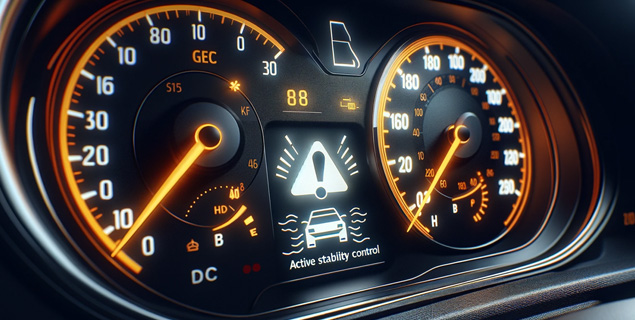The message “ASC System Service Required” displays on the car dashboard when the car is equipped with an Active Stability Control (ASC) system. The system enhances vehicle control for the driver, automatically stabilizing the vehicle at the moment of skidding or when it loses traction at the wheel. When this warning light/message appears, it certainly means there is some problem in the ASC system that must be rectified.
What does the ASC system service required to mean
When your car shows up with the “ASC System Service Required” warning, it shows that something needs to be fixed within the Active Stability Control (ASC) system. On the other hand, the ASC system is designed to help maintain traction and stability by automatically controlling the engine’s power output, if necessary, and applying brakes to specific wheels if a loss of traction or impending skid is detected by the vehicle. This feature is particularly useful in maintaining vehicle control during adverse driving conditions.
Asc system service required message could mean more specifically:
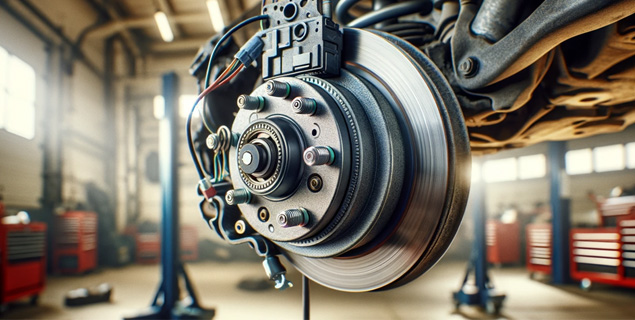
Sensor Fault:
The sensors of the ASC system include the wheel speed sensor, steering angle sensor, and yaw rate sensor, among others. Such a condition may arise if one of these sensors is defective, blocked, or damaged, causing the service message to come on.
Faulty Control Unit:
The system is controlled by an electronic control unit (ECU) dedicated to it. It puts the services at risk of compromised functionality in the case of a fault or when the unit fails.
Wiring or Connection Problems:
The wiring linking the sensors to the control unit could be worn out or damaged in certain portions, such that the signal is interrupted and, hence, the cause for the service required message.
Software Errors:
The errors within the software governing the ASC system could become erroneous in some cases or need updating, which could also trigger the warning.
Mechanical Problems:
Much more rarely, mechanical problems such as braking system malfunctions or differences in pressure from one tire to another can affect the vehicle’s stability and traction, prompting the system to issue warning signals for ASC service.
Asc system service requires some steps you can take:
Checking the basics:
It could be as simple as the tire pressure affecting the vehicle’s stability control system; therefore, ensure each of your tires has been optimally inflated as per the manufacturer’s recommendations.
Wheel Sensors Inspection:
Any system of ASC needs sensors to work on the exact speed of the wheels. Failure of any of these sensors can occur from dirt, debris, or damaging the wheel, which may cause this system to malfunction.
Battery Health:
The ASC system service required sometimes display erratic behavior if the power from the battery to the vehicle’s electrical systems is low or weak. Always check your battery health and replace it when needed.
Error Code Scanning:
Scanning for the diagnostic trouble codes (DTCs) stored by the vehicle’s computer using an OBD-II scanner is possible. Such codes will help you determine what could be wrong with the ASC system.
Professional Diagnosis:
If you find it not to be the trouble of diagnosing or fixing those troubles, or if those measures above fail to fix the problem, ensure that your vehicle is checked by an honest and capable mechanic or taken to an honest and capable dealership. The scanner of the ABS and VSC systems is required for the mechanic who will diagnose the problem. Remember, driving with the malfunction of the ASC system can only heighten the danger of vehicle control loss under slippery conditions or sharp maneuvers, so act on this issue soon.
Active Stability Control (ASC) normally has to be serviced following several steps with the help of most commonly professional diagnostic equipment and expert knowledge, as the system is complicated and safety-critical.
Asc system service requires the most probable steps that the service of the system may include:
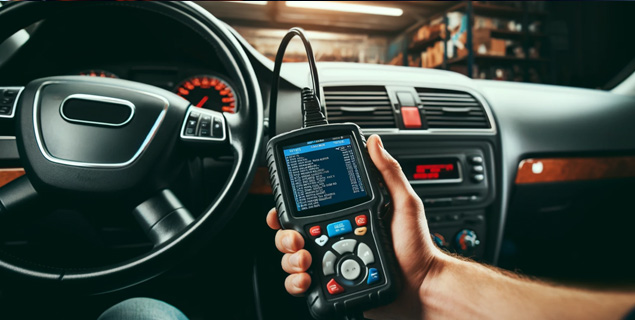
Diagnostic Scan
The ASC System Check diagnosis usually begins by hooking a professional-grade diagnostic tool to the onboard diagnostics port on the vehicle (OBD-II) and reading any fault codes set by the ASC system; these codes help point to which component or sensor may be failing.
Inspection and Testing
Sensor Check:
The ASC system uses wheel speed sensors, yaw rate sensors, and steering angle sensors. The checking includes looking for any physical damage, corrosion, and loose connections of the sensors and checking their proper working.
System calibration:
Some of the problems can be solved by recalibrating the sensors of the ASC system easily. It is to ensure that they deliver accurate data to the vehicle’s control unit.
The braking system pads, rotors, and hydraulic components are some of the parts to be included in the inspection. It normally details the inspection of the braking system, basically because the pads, rotors, and hydraulic components are some of the ASC system’s components that operate together with the car’s braking system.
Tire inspection:
Check the tire condition and pressure since an irregular tread wear pattern or incorrect tire pressure will influence the ASC performance.
Repair or Replacement
Repair or replace any defective part, such as a sensor, wiring, or control unit, found during the diagnosis and inspection.
Software updates:
Control unit software shall be checked and updated. The manufacturer may make a software update to enhance functionality or fix malfunctions of the ASC system that are already known.
Final Testing
Road test:
After every repair or adjustment, the vehicle shall be given a road test to allow the ASC system to operate properly under varied driving conditions.
System reset and error clearing:
Finally, the ASC system reset and cleared of any new error codes. On completion of all, a rescan of the vehicle is carried out to ensure that no new codes have been set and the system is operating without faults.
Maintenance Tips
It involves a take-care vehicle according to the maintenance schedule:
- Proper inflation and servicing of the tires
- Servicing the braking system in the correct manner
- Correction of the warning lights on the dashboard at the earliest possible time
Being of a technical nature, appropriate consultation with an experienced professional in the ASC systems would be ideal. That consultation might be from an authorized mechanic or a dealer equipped and trained with the proper equipment for servicing such systems. Such safety-critical systems being experimented upon by DIY will, in turn, cause more problems unknowingly or compromise the vehicle’s safety features.
ASC system service required cost

It will outline the cost of ASC system service, which displays the service required message and can range widely due to some basic determinants mentioned below:
Vehicle make and model:
Different vehicles have different ASC systems that range in complexity, and therefore, this may predict the cost of parts and time taken during the diagnosis and repair process.
The costs involved could vary with issues like what system part is broken. For example, changing a wheel-speed sensor will be very cheap, whereas the central control units or extensive wiring repair would be significantly more expensive.
“Parts and Labor Rates:
Only the price of the replacement parts is somewhat variable; the rates for labor are greatly variable due to regional considerations and whether it is done at a dealership or an independent repair shop.
Diagnostic Fees:
These are usually professional tests that identify the problem, being the first step in system service. It will vary in fees, but it will often be credited toward the repair if a person elects to do so at the facility that diagnosed the problem.
Rough Cost Estimates
Diagnostic Fees: $50 to $150
Wheel Speed Sensor Replacement: $150 to $400 per sensor (including parts and labor)
Control Unit Repairs or Replacement: $500 to $2000+ (including parts and labor)
Wiring Repairs: $100 to $1000+, depending on the extent of the damage
Miscellaneous: $200 to $600+ for parts such as yaw sensors, steering angle sensors, etc., including labor.
Those prices are not actual, but rather, they are approximate and may vary. It would be better to have the vehicle diagnosed by an expert to identify the exact problem of the ASC system warning for the exact estimate. A detailed quote of the necessary repairs or replacement of parts, for that matter, should be given to you after the diagnosis so that you understand the cost involved fully on your part.
With such immense importance on the vehicle’s safety, it would be indispensable to take on the warnings of service requirements at the risk of financial implications. Driving without operable ASC systems would also more likely increase the chances of an accident, more so if the conditions for driving are not good.
How to fix the ASC system service required
A series of actions usually helps to repair the “ASC System Service Required” warning so that the fault in the Active Stability Control (ASC) System can be diagnosed and fixed. A systematic approach follows:
Read Diagnostic Trouble Codes (DTCs)
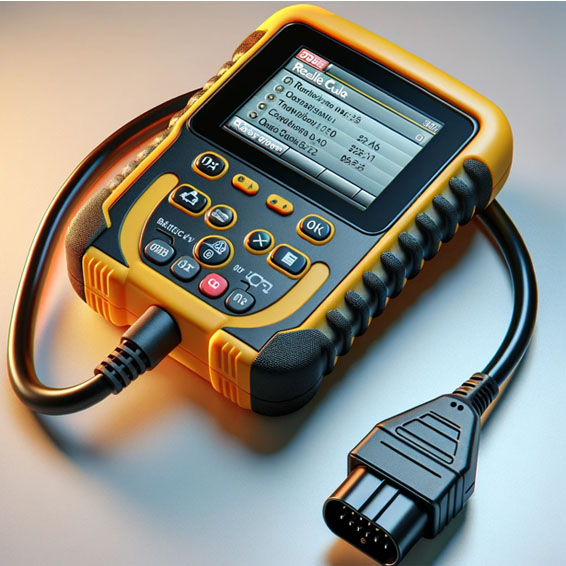
The OBD-II Scanner:
It is a scan tool that connects to the vehicle’s Diagnostic Link Connector (DLC) to read any trouble codes stored in the car’s computer. These codes can give specific clues about the malfunctioning components of the system, like sensors or the control unit.
Inspect and Test Key Components
Wheel Speed Sensors:
Look through the wheel speed sensors for damage, dirt, or any foreign matter inside them. Since the sensors sense the number of each wheel, they are essential for the ASC system. Keep them clean, or when damaged, replace them with new ones.
Steering Angle Sensor:
It measures the steering wheel angle and rate of change in the angle. It is to be ensured that it is properly functional and, if necessary, reinitialized.
Yaw Rate Sensor:
Measures vehicle rotation about its vertical axis. Fault test and calibrate if required.
Braking system:
Since the ASC system works closely with the brakes, make sure the braking system parts are all intact, and no air is left remaining in the brake lines.
Check for Software Updates
ECU:
Sometimes, you may get an updated solution to your vehicle’s ECU. Kindly look for an available update from your dealer or service center.
Repair or Replace Faulty Parts
Replace or repair, wherever necessary, all identified faulty parts based on diagnostic codes and component tests. It can be as simple as replacing a sensor to as complex a fix as problems with the ASC control module.
Clear the Codes and Test
Clear any diagnostic trouble codes from the vehicle computer using an OBD-II-compatible scanner. Carry out a road test with the vehicle under different driving conditions so that the ASC system gets to function under those conditions after the necessary repair works are completed and the warning does not reappear.
Conclusion
The explicit message, “ASC System Service Required,” would then point out that the system may fail to work as expected unless proper diagnosis and repair of the problem is effected, which would bring about possible increased risk of losing vehicle control during critical driving conditions. That means it’s high time this warning is heeded and the vehicle is immediately taken to the mechanic or the dealer for inspection and service.
It implies that they can carry out full diagnostics to detect and fix the underlying problem for the system to work properly and keep the security and performance of your vehicle up to the mark.
Most diagnostic tests and repairs are easy, and you can carry them out without stress if you are bold enough. If not, then be sure to seek further professional help when the problem persists, even after taking all these steps.
However, this system will have to be taken to an authorized mechanic or dealer with the proper diagnostics and knowledge to repair it right. The ASC system is critically needed for the stability and safety of your car under hostile conditions. “ASC System Service Required” is the prompt you should attend to as soon as it comes, without heeding it, as among the features, it is the ones of operation.
FAQ
1. ASC system service required Mitsubishi Outlander
Suppose an “ASC System Service Required” message is presented on your Mitsubishi Outlander. In that case, this is merely a representative indication that the vehicle’s Active Stability Control (ASC) system has detected a fault. The ASC system, therefore, greatly enhances stability by automatically controlling the power output and applying braking force to wheels if the sensor senses a loss of traction force or detects a skid.
Here’s a step-by-step approach to what to do next:
Check for Simple Issues
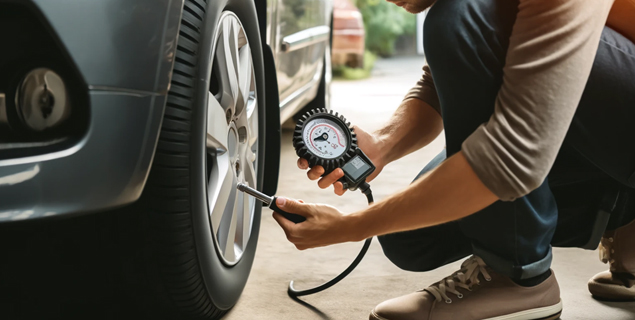
Tire pressure:
Ensure all the tires are at the recommended tire pressure. Poorly inflated tires give erratic vehicle handling, which may cause an ASC warning.
Battery Condition:
Weak or failed batteries can sometimes cause erratic problems with vehicle electronics, including the ASC system.
Diagnostic Scan
- OBD-II Scanner:If available, use an onboard diagnostics (OBD-II) scanner and read the trouble codes stored in the vehicle’s computer. It may indicate some of the causes for the malfunction in the ASC system, which may have common problems, like the wheel speed sensor, steering angle sensor, or the ASC control unit.
Sensor and Component Inspection
- Wheel Speed Sensors: The ASC Common Failure. Another example that may end up in an ASC common failure is the wheel speed sensors. Check for visible damage, dirt, or foreign material, as it may hinder the work of the sensors. In this case, cleaning or changing the sensors will be necessary.
- Wiring and connectors: Check the wiring and connectors for visible damage, contacting with neighboring parts, or damaging the sensor or ASC control unit function through corrosion.
Professional Service:
If you cannot diagnose or remedy the problem by yourself, or if the diagnostic codes indicate the trouble is the nature that should be done by a professional, such as a defective ASC control unit, have the vehicle checked and repaired by a Mitsubishi dealer or qualified service personnel. They have the specific tools and software needed for a more in-depth diagnosis and repair.
System Reset and Calibration:
If need be, for repairs, it normally requires resetting or recalibration of the ASC system with professional diagnostic equipment.
Costs Involved:
The “ASC System Service Required” message can cost, in terms of fixing it, anything between cheap and very expensive, depending upon what the actual problem is. Some cheap and simple solutions—like inflating tires or cleaning sensors—can be completely free if done independently. But the cost of swapping out the wheel speed sensors or the ASC control unit, say, might run a car owner several hundred to well over a grand in parts and labor.
The vehicle can be operated with the ASC warning in this state, but the ASC system will not function correctly; this may affect the vehicle’s controllability by the driver during sudden maneuvers or slippery conditions. Always prioritize safety and consult with a professional if you need clarification on the severity of the issue.
2. ASC system service required Mitsubishi car won’t start
The “ASC System Service Required” warning light appearing on the display and the fact that the car does not start are highly unlikely to have any relation to each other. The Active Stability Control (ASC) concerns the vehicle’s stability and traction. A malfunctioning ASC should not directly affect the vehicle’s start. However, the underlying causes indicate problems occurring in the electrical realm and may prevent two things: the ASC system’s functioning and the vehicle’s starting up. Here’s how to approach it:
Check the Battery
- Battery Health: The car will fail to start if the battery is weak or dead. Besides, check if the car headlights and dashboard lights come on. If the lights are dim, flickering, or give a slow cranking sound when the car is initiated, the battery may not work properly.
- Battery Connections: Ensure that battery connections are clean, tight, and free from corrosion, as poor connections will lead to the car not starting.
Inspect the Starting System
- Starter Motor: The car produces a click at the onset of the engine. In case there is a single click, the starter motor could be faulty.
- Ignition System: Problems within the ignition switch or with the key fob (if your car has push-button start) could also prevent the car from starting.
Check for Error Codes
- Use an OBD-II scanner to check for diagnostic trouble codes (DTCs). Although the ASC system might not relate directly to starting problems, the same underlying electrical faults could cause errors in both systems.
Examine the Fuel System
- Fuel Pump: Try to hear the hum or buzz of the fuel pump for a few seconds when the ignition is put in the “ON” position before starting the engine. If there is no such noise, consider the fuel pump or relay faulty.
- Fuel Filter: A clogged fuel filter can prevent the engine from starting.
Evaluate the Engine and Sensors
- Mechanical Issues: Although less likely, known mechanical issues with the engine can impede starting.
- Sensors: A defective sensor, like the crank position sensor, could prevent the engine from starting. It should normally set a DTC.
Professional Diagnosis
Since vehicles nowadays are complicated and some of the problems may show the same symptoms as others, it is advisable to seek help from a professional, especially if basic troubleshooting doesn’t solve the problem. It can be offered at a Mitsubishi dealership or by a certified mechanic since they have the proper equipment and software to interface with Mitsubishi’s systems.
One should remember that although the “ASC System Service Required” message pointed out a problem within the stability control system, it generally has little direct bearing on the engine not starting. It could be two unrelated issues or one broad electrical problem affecting two systems.

